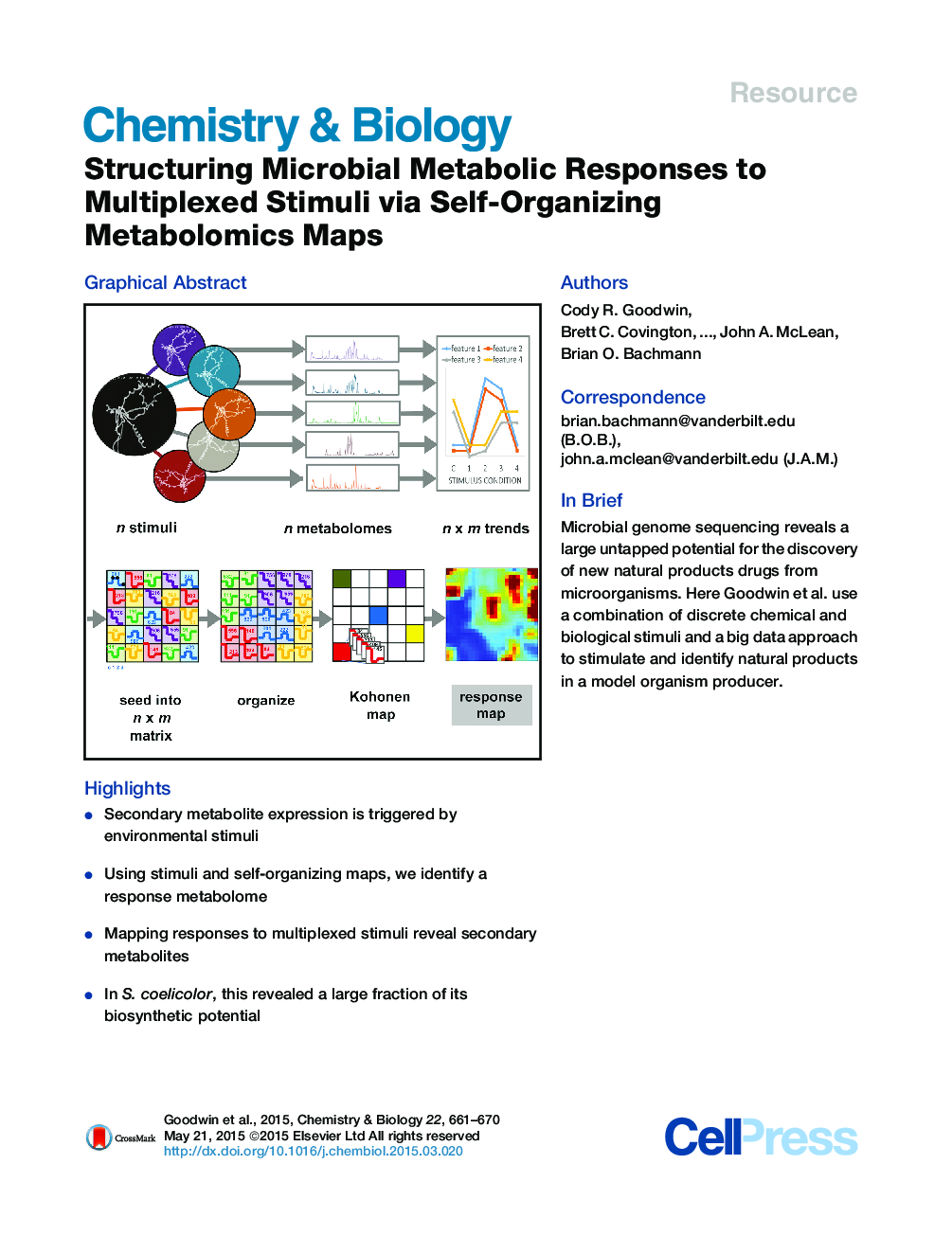| Article ID | Journal | Published Year | Pages | File Type |
|---|---|---|---|---|
| 1391981 | Chemistry & Biology | 2015 | 10 Pages |
•Secondary metabolite expression is triggered by environmental stimuli•Using stimuli and self-organizing maps, we identify a response metabolome•Mapping responses to multiplexed stimuli reveal secondary metabolites•In S. coelicolor, this revealed a large fraction of its biosynthetic potential
SummarySecondary metabolite biosynthesis in microorganisms responds to discrete chemical and biological stimuli; however, untargeted identification of these responses presents a significant challenge. Herein we apply multiplexed stimuli to Streptomyces coelicolor and collect the resulting response metabolomes via ion mobility-mass spectrometric analysis. Self-organizing map (SOM) analytics adapted for metabolomic data demonstrate efficient characterization of the subsets of primary and secondary metabolites that respond similarly across stimuli. Over 60% of all metabolic features inventoried from responses are either not observed under control conditions or produced at greater than 2-fold increase in abundance in response to at least one of the multiplexing conditions, reflecting how metabolites encode phenotypic changes in an organism responding to multiplexed challenges. Using abundance as an additional filter, each of 16 known S. coelicolor secondary metabolites is prioritized via SOM and observed at increased levels (1.2- to 22-fold compared with unperturbed) in response to one or more challenge conditions.
Graphical AbstractFigure optionsDownload full-size imageDownload high-quality image (209 K)Download as PowerPoint slide
